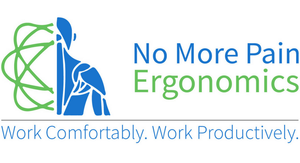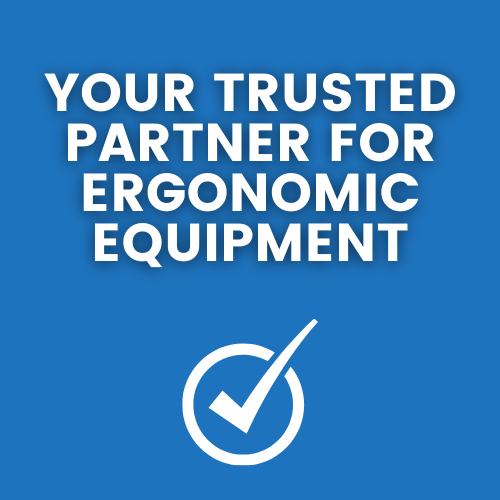-
Shop
- 🔥 Warehouse Clearance Sale 🔥
- Ergonomic Mice
- Ergonomic Keyboards
- Specialised Ergonomic Mice
- Standing Desks
- Ergonomic Chairs
- Laptop Stands & Risers
- Monitor Risers
- Computer Monitor Arms
- Footrests
- Wrist and Forearm Supports
- Back Supports
- Tablet Accessories
- Boardroom Chairs
- Headsets
- Other Ergonomic Equipment
- Online Ergonomic Training Courses
- New Products

- For Customers
- For Business Customers
- For Health Professionals
- About Us
- Reviews
We are receiving some email questions from our customers who have recently been told to work from home -
and the majority are related to areas of pain and how to feel more comfortable while working at the computer in the home environment.
Below we've put together some tips to adjust your workspace at home based on area of pain that you can experience to assist in making you more comfortable.
Please note, we will always advise that you see an occupational therapist, osteopath or physiotherapist to check out your specific pain and its cause. Our expert team are happy to work with your health professional in finding the right product in our catalogue for your specific needs - just email us at: info@nomorepainergonomics.com.au or phone on 1300 898 965 to get more details.
I'm experiencing pain in in my fingers while typing or using the mouse at home.
Your keyboard is not supportive - traditional keyboards have large keys and the option to raise the back feet of the keyboard. These keyboards promote hard typing, which forces your fingers to over-activate their muscles unnecessarily and cause fatigue and pain. Ensure you do not use the 'feet' on these keyboards as this promotes you to over-extend the knuckles and wrists to type. If you are using a keyboard for most of your work - look at investing in a keyboard that is compact, with low profile keys and sits flat on the desk. Click here for some options.
You may be holding your mouse incorrectly - Check how to correctly hold your mouse.
I'm experiencing pain in in my wrists while typing or using the mouse at home - why?
One of the most common pain areas for working at a computer is the wrists and forearms. This pain can be caused by several reasons, and below are some tips to reduce computer task-induced pain in these areas.
Adjust your chair/desk so that your elbows are at desk height or slightly higher than desk height.
Adjust your keyboard and mouse to be no more than 12cms away from the front edge of the desk.
Use avertical mouse that places your hand, wrist and forearm in a neutral position.
Use a compact keyboard to reduce unnecessary reaching.
Use a wrist support to stop your wrist from lying flat on the hard surface of the desk and putting unnecessary pressure on the nerves and blood supply in the carpal tunnel and wrist joint.
- Ergonomic Mice
- Ergonomic Keyboards
- Wrist Supports
I'm experiencing pain in in my neck and shoulders while working at my computer at home.
Adjust your chair/desk so that your elbows are at desk height or slightly higher than desk height.
Adjust your keyboard and mouse to be no more than 12 cms away from the front edge of the desk.
Adjust your computer screen height so that your eye level is within the top third of the screen. Your head should be looking straight ahead with not tilting downwards to look at the screen. Unable to achieve this? Click here for our laptop, tablet and monitor risers.
Adjust your computer screen so that it is directly in front of you. This stops your head from being awkwardly positioned to twist to see the screen.
Learn to touch type so that you are do not need to look down when typing on your keyboard.
Does your chair have arm rests? Ensure your arm rests are positioned correctly (see below). If they are positioned too high, or you tend to lean on one side of them - this causes shoulder elevation and awkward positioning of the shoulders and neck. If you cannot achieve the correct position below, or find you use the arm rests incorrectly - remove the arm rests from the chair, or replace the chair entirely. Click here for our range of ergonomic chairs that include adjustable, removable arm rests.
Take regular breaks to stand and stretch - try the Hedge's 3S Ideal Work Pattern.
Let's look at the possibilities of work-induced tasks on why this could be occurring.
- Laptop & Monitor Risers
- Ergonomic Chairs
I'm experiencing pain in in my lower back while working at my computer at home.
Adjust your chair so that there is a 90-120 degree angle in your hip joint. Gold standard for ergonomics is for the chair to be slightly reclined - this can only be achieved with an adjustable chair.
Move your bottom so that it is resting at the very back of the chair.
Use a chair with a high back, and regularly check your posture that your back lays against the chair while working.
Use a chair with adjustable lumbar support. Our backs are individual and it is important to be able to fully support the natural curve of your back. Using a standard dining chair, or cheap office chair does not allow for this support and can cause injury if you are sitting for a prolonged period during your day. Using a small towel to fill the gap in the lower back while sitting can be a short term solution to feeling more comfortable, but we strongly suggest looking into an ergonomic chair to prevent further back pain.
Use a sit-stand desk. A large body of work has been produced to prove the benefits on your health using a standing desk that includes reducing the risk of back pain while at your desk. Our range of sit-standing desks include 'on-desk' solutions - so if you already have an office desk, our standing desks can sit atop your existing desk and adjust so that you can easily reposition from sit-stand-sit throughout your work day.
Take regular breaks to stand and stretch - try the Hedge's 3S Ideal Work Pattern.
- Sit Stand Desks
- Ergonomic Chairs
We hope this informaiton helps to setup your home workspace to be comfortable and more productive. If you have any questions regarding our product range, or general ergonomic questions, please feel free to contact us at: info@nomorepainergonomics.com.au or phone: 1300 898 965 - we'd be happy to help find the best ergonomic setup for your space.
We love your feedback! Please let us know your thoughts on this article below.







